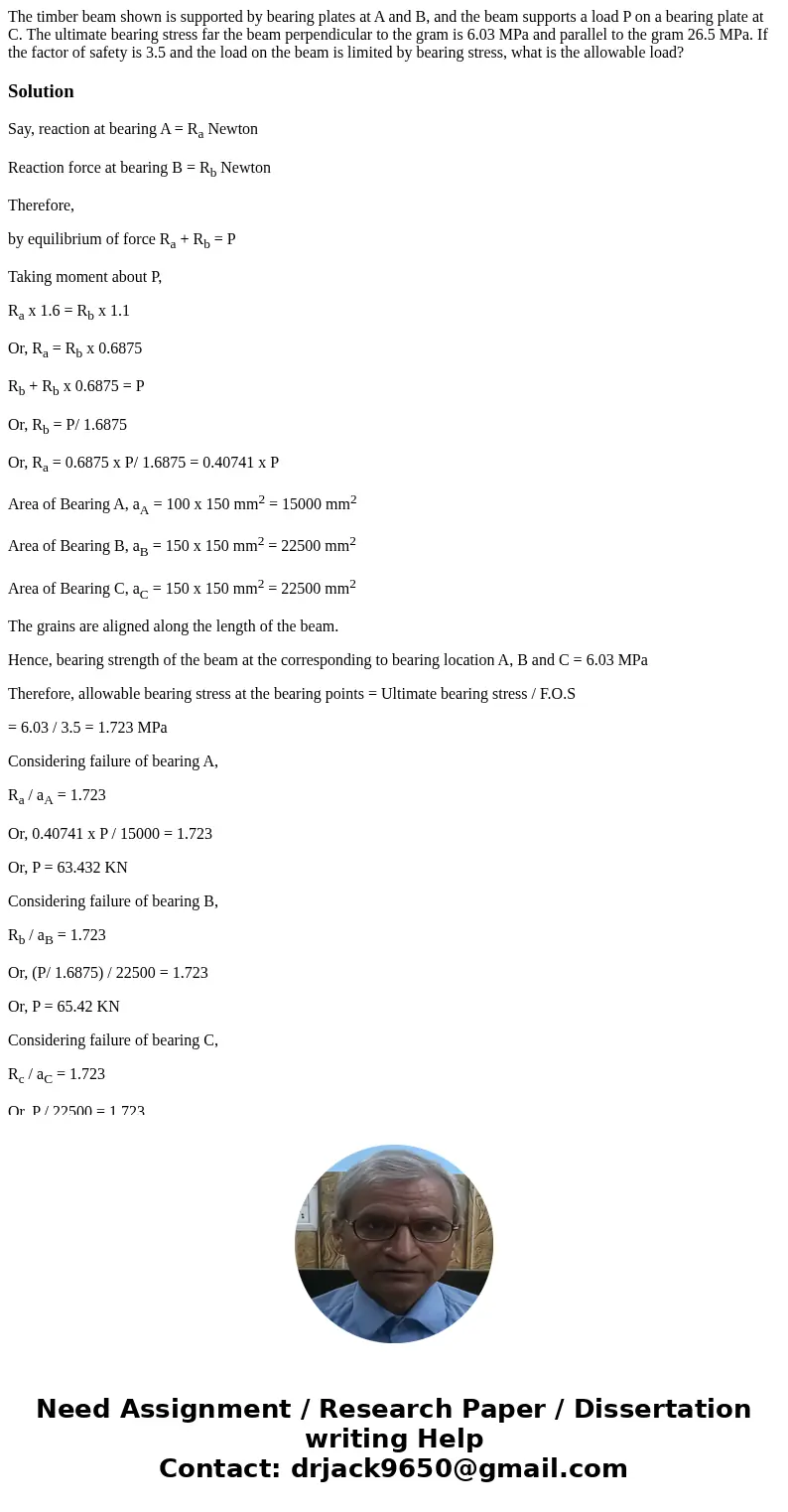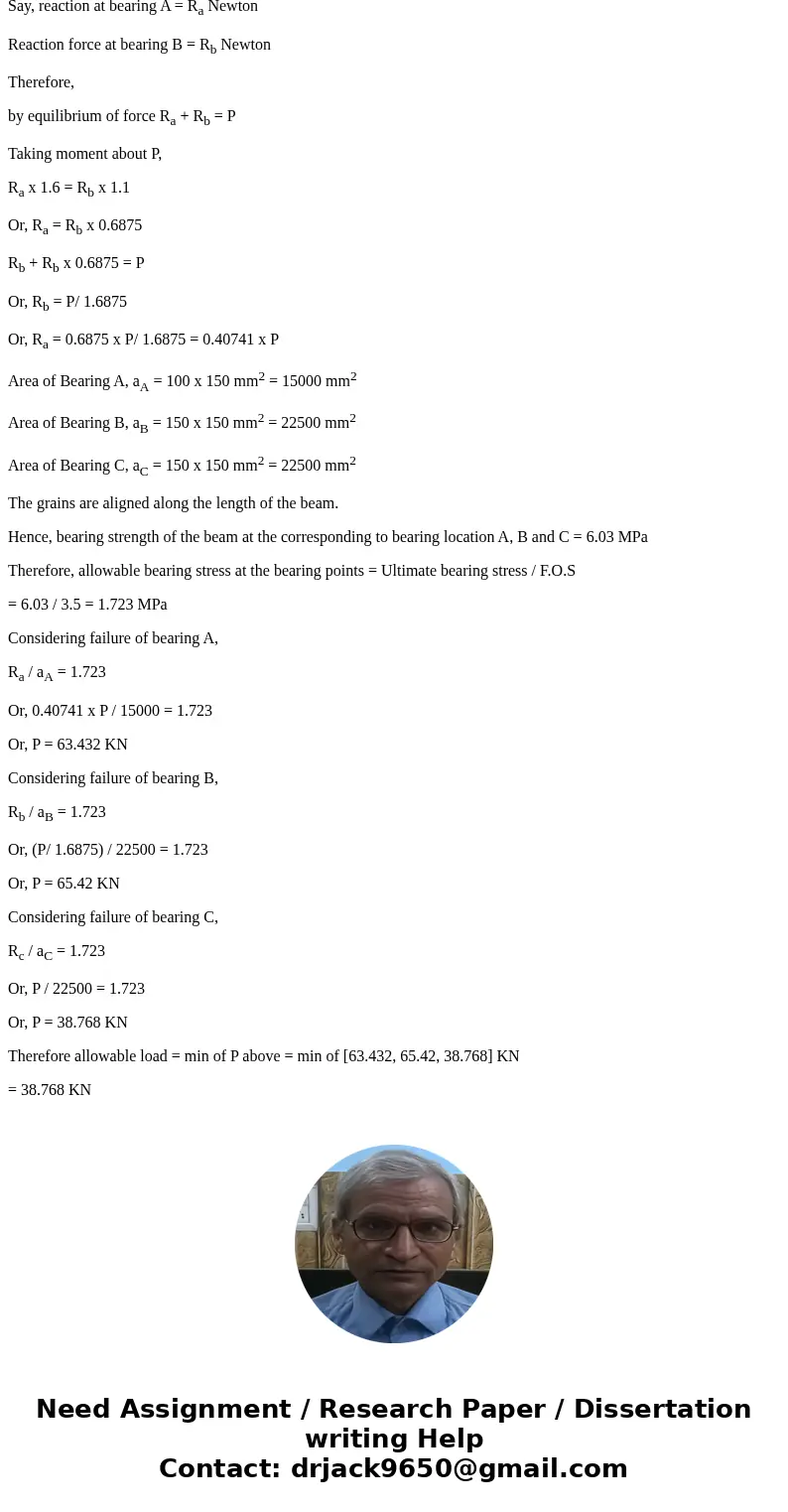The timber beam shown is supported by bearing plates at A an
Solution
Say, reaction at bearing A = Ra Newton
Reaction force at bearing B = Rb Newton
Therefore,
by equilibrium of force Ra + Rb = P
Taking moment about P,
Ra x 1.6 = Rb x 1.1
Or, Ra = Rb x 0.6875
Rb + Rb x 0.6875 = P
Or, Rb = P/ 1.6875
Or, Ra = 0.6875 x P/ 1.6875 = 0.40741 x P
Area of Bearing A, aA = 100 x 150 mm2 = 15000 mm2
Area of Bearing B, aB = 150 x 150 mm2 = 22500 mm2
Area of Bearing C, aC = 150 x 150 mm2 = 22500 mm2
The grains are aligned along the length of the beam.
Hence, bearing strength of the beam at the corresponding to bearing location A, B and C = 6.03 MPa
Therefore, allowable bearing stress at the bearing points = Ultimate bearing stress / F.O.S
= 6.03 / 3.5 = 1.723 MPa
Considering failure of bearing A,
Ra / aA = 1.723
Or, 0.40741 x P / 15000 = 1.723
Or, P = 63.432 KN
Considering failure of bearing B,
Rb / aB = 1.723
Or, (P/ 1.6875) / 22500 = 1.723
Or, P = 65.42 KN
Considering failure of bearing C,
Rc / aC = 1.723
Or, P / 22500 = 1.723
Or, P = 38.768 KN
Therefore allowable load = min of P above = min of [63.432, 65.42, 38.768] KN
= 38.768 KN


 Homework Sourse
Homework Sourse